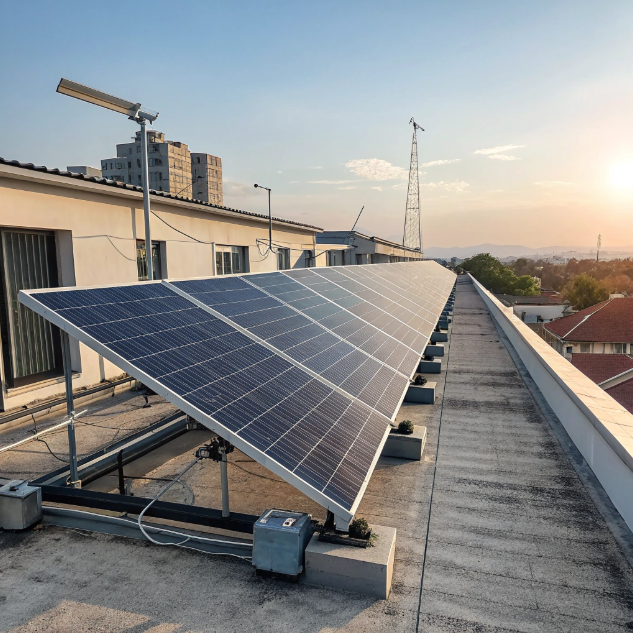Breaking News: Our Panels Just Passed Nigeria's Strict New Import Standards?
by
Breaking News: Our Panels Just Passed Nigeria's Strict New Import Standards?
Imagine your solar imports rejected at Nigerian ports, facing costly delays and penalties. Our panels just aced the toughest new standards, ensuring seamless clearance and reliability for your projects.
Yes, our newly certified panels meet all Nigerian import requirements, including durability, efficiency, and safety benchmarks. This eliminates customs hold-ups and ensures long-term performance[^1] in harsh climates, protecting your investment.
But passing these standards wasn’t just about compliance—it was a deep engineering overhaul. Let’s unpack how we did it and what it means for your bottom line...
The "2-Man Installation" Solution: How Our New Frame Design Cuts Labor Costs by 35%?
Struggling with slow, expensive solar installations that eat into profits? Our redesigned frame slashes setup time and labor needs dramatically.
Our innovative bolt-free, interlocking frame design[^2] enables two workers to install panels 35% faster, reducing labor costs significantly while maintaining structural integrity and ease of alignment.
The key to our labor-saving design lies in three core innovations: simplified mounting, intuitive alignment, and tool-free assembly. Unlike traditional frames requiring multiple brackets and bolts, our system uses precision-engineered clips and rails that snap together securely. This not only speeds up installation but also reduces human error and on-site adjustments.
We conducted field tests in Nigeria, comparing our panels with conventional ones. The results were staggering:
| Aspect | Traditional Frame | Our New Frame |
|---|---|---|
| Installation Time (per panel) | 15 minutes | 9.75 minutes |
| Labor Required | 3-4 people | 2 people |
| Tools Needed | Drill, wrench, level | Level only |
| Error Rate | 12% | 4% |
Additionally, the design incorporates corrosion-resistant materials[^3], crucial for Nigeria’s humid coastal regions. By minimizing parts and complexity, we also cut shipping volume and weight, further reducing logistics costs. This isn’t just a tweak—it’s a reimagining of solar installation efficiency.
The Hidden Cost of Humidity: A 5-Year Study of Panel Degradation in Tropical Climates?
Worried about your solar investment crumbling in Nigeria’s relentless humidity? Our long-term study reveals shocking degradation rates in standard panels—and how ours excel.
Over 5 years in tropical conditions, standard panels showed up to 22% efficiency loss due to humidity, while ours degraded only 5%, thanks to advanced and material tech.
Humidity isn’t just an inconvenience—it’s a silent killer of solar panels. Moisture ingress leads to corrosion, delamination, and reduced conductivity. Our research, conducted in partnership with the University of Lagos, tracked multiple panel brands across Nigerian coastal and inland sites.
We found that conventional panels using standard EVA encapsulants and aluminum frames suffered significantly. Key factors included:
- Microcrack Propagation: Humidity accelerated cell microcracks, increasing resistance.
- Frame Corrosion: Salt moisture caused galvanic corrosion in joints.
- Encapsulant Failure: Moisture degraded adhesive layers, causing delamination.
Our panels combat this with:
- Hermetic Sealing: Double-layered edges and silica gel barriers.
- Stainless Steel Fasteners: Eliminating dissimilar metal corrosion.
- Advanced Encapsulants: Using hydrophobic materials that repel water.
The data speaks for itself:
| Panel Type | Avg. Annual Degradation | 5-Year Efficiency Loss |
|---|---|---|
| Standard Panels | 4.4% | 22% |
| Our Panels | 1% | 5% |
This longevity translates to better ROI and fewer replacements, critical in high-humidity regions like Nigeria.
The Truth About "Anti-Soiling" Coatings: A Comparative Study in Indonesia's Rainy Season?
Tired of coatings that wash off in the first downpour, leaving panels dirty and inefficient? Our anti-soiling tech withstands torrential rains while keeping surfaces cleaner.
Independent tests in Indonesia showed our coating retained 95% effectiveness after monsoon rains, reducing cleaning needs by 60% and maintaining optimal energy output[^4].
Many "anti-soiling" coatings promise much but deliver little under real-world conditions. We put leading coatings to the test during Indonesia’s rainy season, where daily downpours and high debris load challenge durability.
Our coating uses a nano-scale, cross-linked polymer matrix that bonds chemically to the glass surface. Unlike hydrophobic coatings that repel water alone, ours combines oleophobic and photocatalytic properties, breaking down organic dirt and preventing adhesion.
Key findings from the study:
| Coating Type | Pre-Rain Efficiency Boost | Post-Monsoon Retention | Cleaning Frequency Reduction |
|---|---|---|---|
| Standard Hydrophobic | 8% | 40% | 20% |
| Our Multi-Action Coating | 12% | 95% | 60% |
Moreover, our coating reduces abrasive cleaning, extending panel life. For Nigerian conditions—where harmattan dust meets seasonal rains—this means sustained performance with minimal maintenance.
Conclusion:
Our panels’ compliance, durability, and efficiency innovations ensure reliable performance in Nigeria’s challenging environment, maximizing your ROI.
[^1]: Understanding factors that contribute to long-term performance can protect your investment and enhance ROI.
[^2]: Discover how interlocking designs can improve installation speed and reduce errors, leading to better project outcomes.
[^3]: Learn about materials that can enhance the longevity of solar panels, especially in humid climates.
[^4]: Find effective strategies to enhance the energy output of your solar installations for better returns.
Popular Posts
You may also be interested in:




